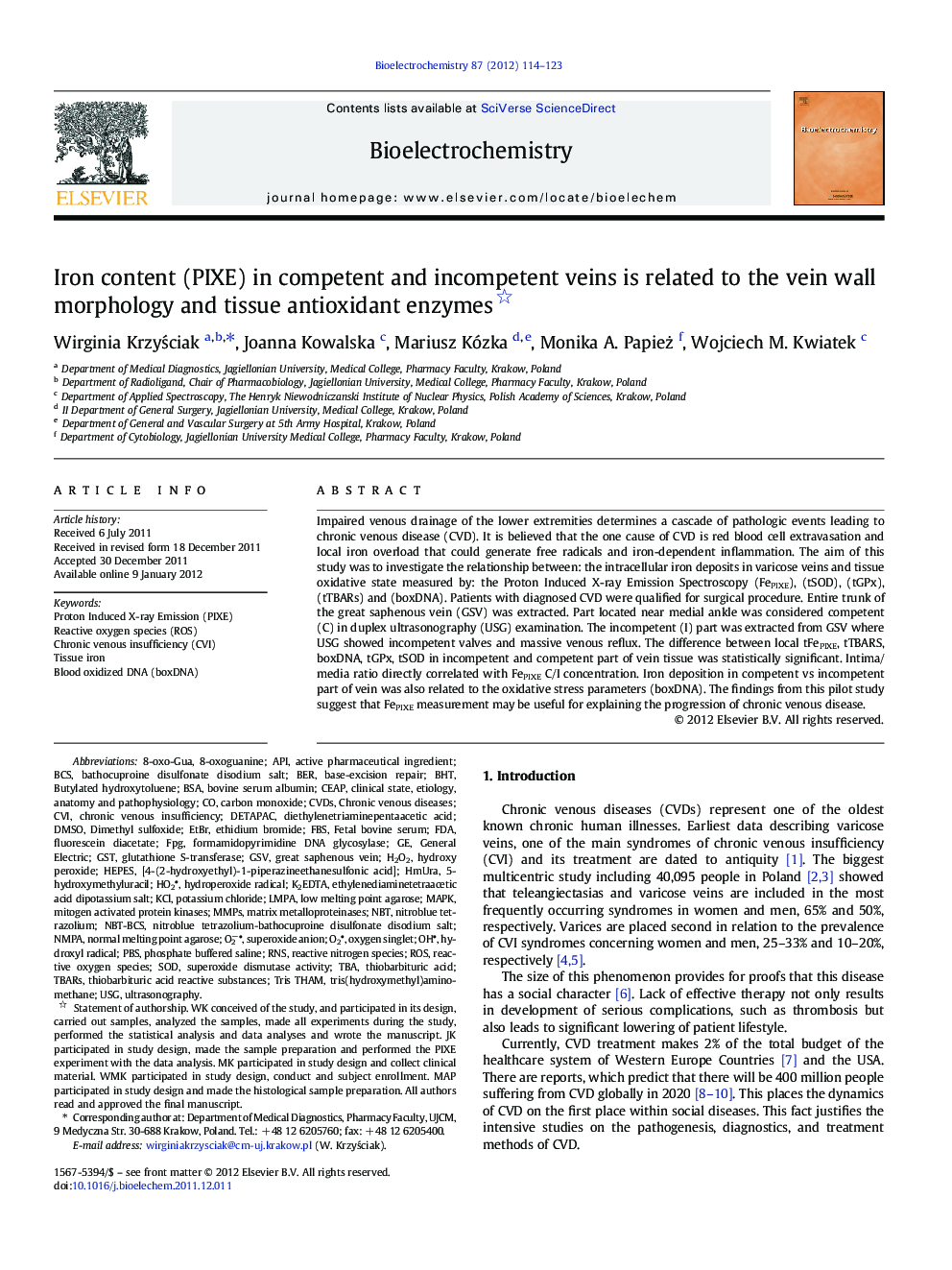| Article ID | Journal | Published Year | Pages | File Type |
|---|---|---|---|---|
| 1274445 | Bioelectrochemistry | 2012 | 10 Pages |
Impaired venous drainage of the lower extremities determines a cascade of pathologic events leading to chronic venous disease (CVD). It is believed that the one cause of CVD is red blood cell extravasation and local iron overload that could generate free radicals and iron-dependent inflammation. The aim of this study was to investigate the relationship between: the intracellular iron deposits in varicose veins and tissue oxidative state measured by: the Proton Induced X-ray Emission Spectroscopy (FePIXE), (tSOD), (tGPx), (tTBARs) and (boxDNA). Patients with diagnosed CVD were qualified for surgical procedure. Entire trunk of the great saphenous vein (GSV) was extracted. Part located near medial ankle was considered competent (C) in duplex ultrasonography (USG) examination. The incompetent (I) part was extracted from GSV where USG showed incompetent valves and massive venous reflux. The difference between local tFePIXE, tTBARS, boxDNA, tGPx, tSOD in incompetent and competent part of vein tissue was statistically significant. Intima/media ratio directly correlated with FePIXE C/I concentration. Iron deposition in competent vs incompetent part of vein was also related to the oxidative stress parameters (boxDNA). The findings from this pilot study suggest that FePIXE measurement may be useful for explaining the progression of chronic venous disease.
► Tissue iron overload could generate free radicals in varicose veins. ► PIXE method can be used for iron content in venous vessels. ► The presence of free iron ions result in damage of DNA.
